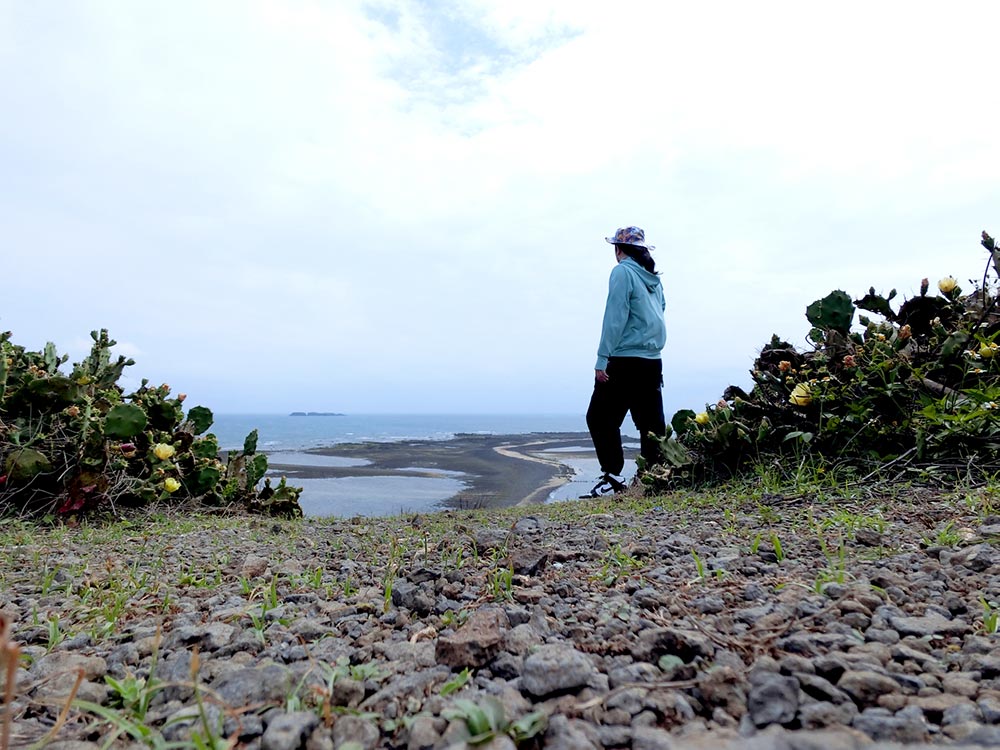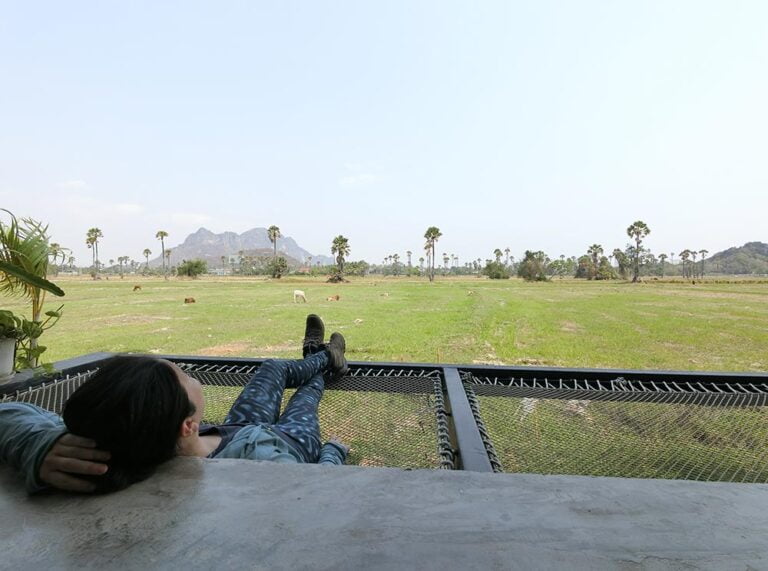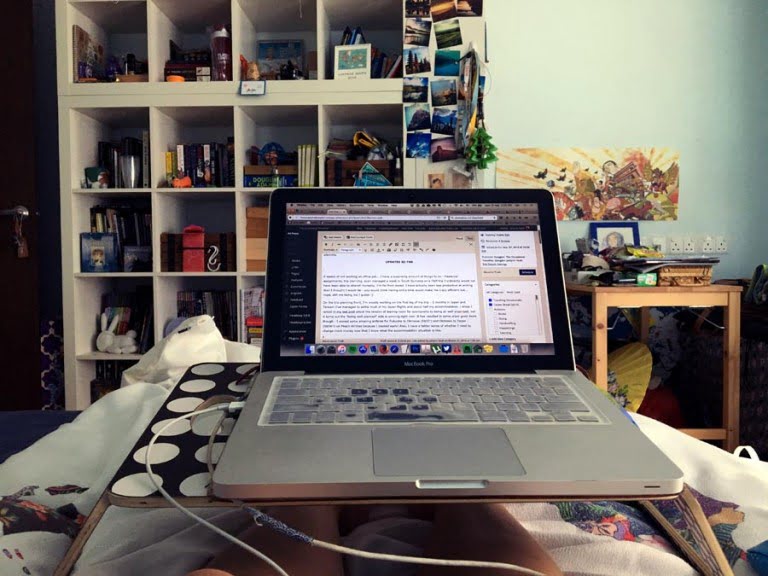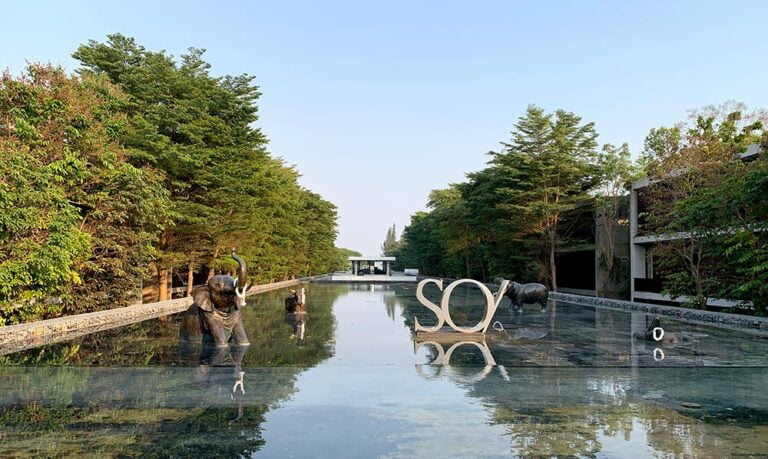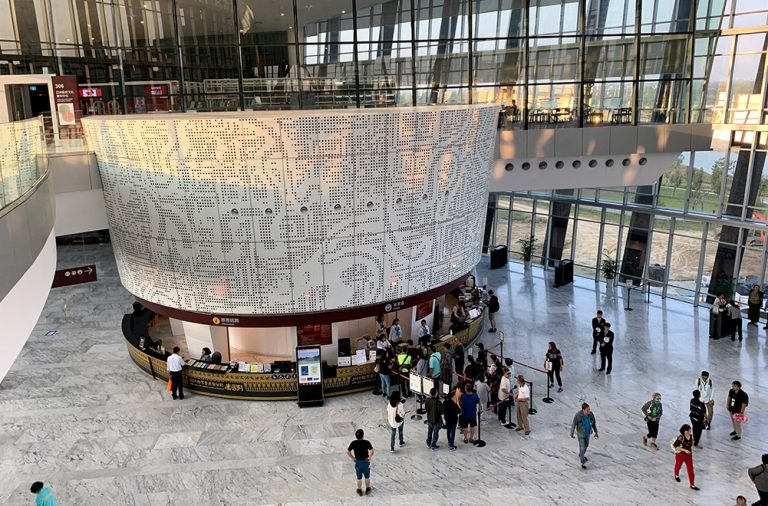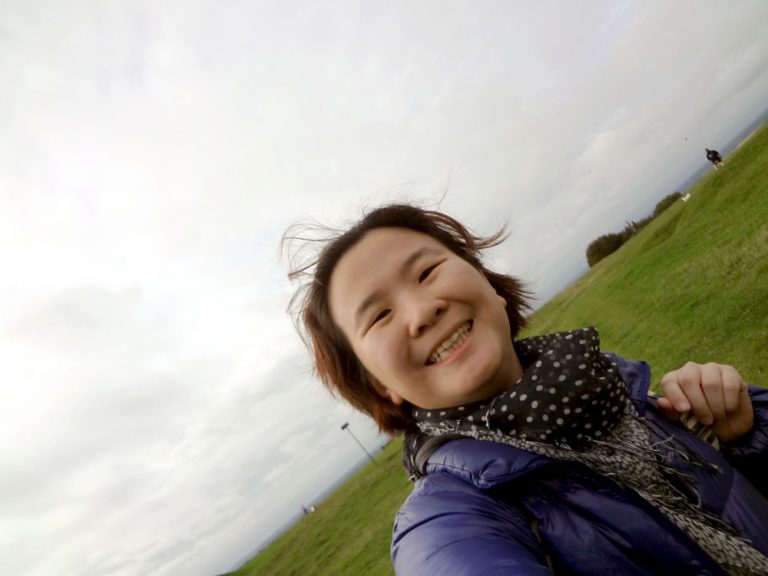Taiwan Matsu Islands: Things to do in Beigan 北竿
Taiwan‘s Matsu Islands consists of a cluster of islands – Nangan and Beigan are its two main islands because they have airports that connect them to Taiwan’s main land. Beigan feels to me like the quieter of the two islands – here’s my list of things to do in Beigan and what to see when you visit.
This article is a guide to Beigan, you can also check out my Nangan guide, or have a look at my overall Matsu Islands guide if you are planning a trip to these Taiwan offshore islands. I recommend coming during the Blue Tears season if you can, it’s a real magical sight.
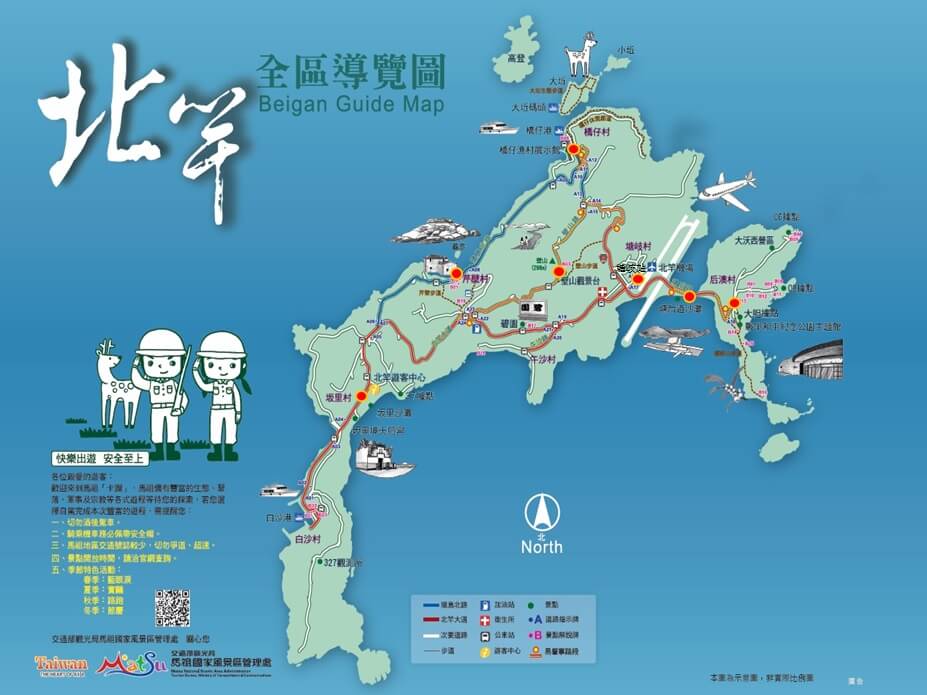
How much time do you need to explore Beigan?
I spent 2 nights in Beigan – I took a ferry over from Nangan on Sunday which stopped over at Daqiu island along the way, and then flew out of Beigan airport to Taipei on Tuesday morning.
Day 1: Daqiu Island (2 hours) – Beigan (around noon) – Qinbi Village – Bishan – Tanqi Village, War and Peace Memorial – Luoshan Nature Trail – Blue Tears Boat Ride (night)
Day 2: Broadcast Station – Banli – No 6 Stronghold – Qinbi
Day 3: Morning flight to Taipei Songshan
I think Beigan has less things to do compared with Nangan, so 2 nights was definitely enough time for a leisurely visit. I was a bit tired so I didn’t hike as much as I could have, but I think 2 days was about the right amount of time to spend in Beigan, which included a 2 hour stopover at Daqiu Island.
Again I had my own transport so getting around quickly was quite easy. Like Nangan, there are round island buses for those who don’t ride scooters or rent a car, but you might need to buffer more time for that.
Can you take a day trip to Matsu Island’s Beigan?
Like Nangan, there is an early morning flight around 620/645am depending on the day which allows you to reach Nangan nice and early about 730/8am. The latest flight departing Beigan leaves at about 510pm and reaches Taipei Songshan at around 6pm.
So the answer is yes, you can take a day trip to Beigan from Taipei, but you have to hope that there are no delays (fog and weather can mean cancellation/delays) and that the last flight out doesn’t get cancelled. I’d recommend staying at least 1 night in Beigan.
See more details about how to get to the Matsu Islands in my Matsu Islands planning post.
Important places in Beigan
Beigan Airport 北竿機場 (MFK)
While Nangan Airport is busier, Beigan Airport was actually the first airport to be built in the Matsu Islands in 1994 and the only airport until Nangan Airport was built in 2003. It’s a cute tiny airport which sees just three flights a day.

One thing you’ll notice about the Matsu Islands is how damn hilly the place is. With slopes and steep inclines everywhere, the original airport could only service very small planes, so they had to relocate the airport again in 2005, reclaimed some land and blew up some hills to built the airport as we see it today.
Avid plane spotters can head to the highest point of Beigan (Bishan), Duanpo or the pavilion on Luoshan Nature Trail to watch the planes flying in and out of Beigan Airport.

The Beigan Airport is located in Tangqi Village. Location on Google Maps
Baisha Harbour 白沙港
Baisha Harbour on the south western shore of Beigan is much smaller and less busy than Nangan’s Fu’ao Harbour as the only route it serves is the Nangan-Beigan connection. You’ll need to pop over to Nangan if you want to take a ferry to any other island in Matsu.
If you want to visit Daqiu Island, you’ll need to go to Qiaozi Village instead in the northern part of the island, right across the water from Daqiu. This is also where you can take the blue tears boat ride from.
Beigan Visitor Centre 北竿遊客中心
The Beigan Visitor Centre is located in Banli not far from the temple and what you can charitably call Banli Village’s main street. Stop by if you are coming from Baisha Harbour and pick up some maps here to kickstart your exploration of Beigan.
Open daily 830am – 5pm. Location on Google maps
I’ve classified things to do in Beigan according to the main areas they can be found to help you plan your itinerary for the day, but really this island is quite small.
Banli Village 坂里聚落
Banli is the closest main village to the Baisha Harbour and where the Tourism Centre is located along with other amenities.
Banli Breakfast Shop 坂里早餐店
This literal hole in the wall shop is where you can pick up some Taiwanese breakfast and the local-style Jiguang Hamburger. I got mine with just some fried egg inside, but you can add in meat as well.
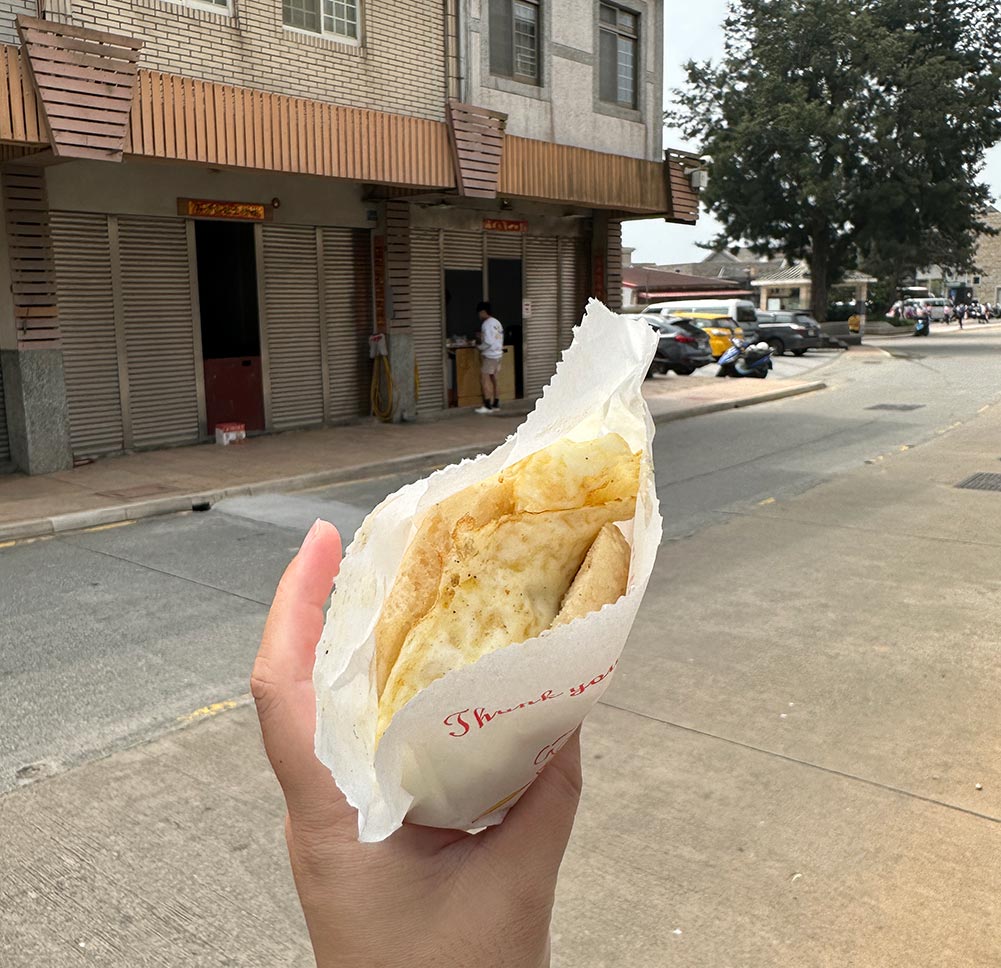
Banli Breakfast Shop 坂里早餐店 is open from 7am – 11am everyday and closed on Tuesdays. [Google Maps location]
Banli Tianhou Temple 坂里天后宮
Matsu Tourism calls this temple the world’s smallest Mazu temple and while it is indeed very compact, it’s been well taken care of and is a bright addition to Banli Beach’s shoreline. Right behind the temple is a small and colourful flower field, and you can spend some time strolling along the boardwalks here. The beach is quite expansive and I think would be very popular in the summer time.


Totoro Tunnel (Mount Nigu Stronghold 42) 龍貓隧道 (尼姑山42據點)
I was curious about what was on the southern tip of Beigan Island because while there was a road that lead there, Google didn’t have any other information at all. Signs indicated this area was Mount Nigu or Stronghold 42, and a little Googling turned up a spot the locals used to call Totoro Tunnel because it looked quite mysterious.
More info at Taiwan Hikes. There’s also a link to old pix of the stairway before renovation which people say killed the original charm.
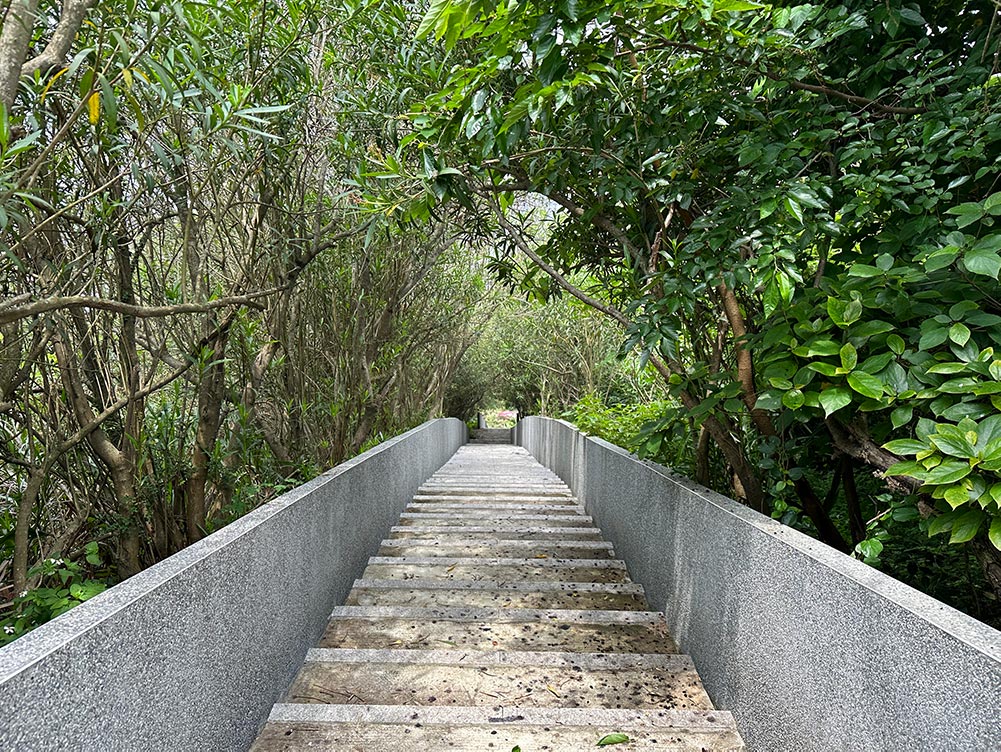
It probably is safer I guess. This stronghold is very much abandoned and overrun by plants but has a lovely coastal view.
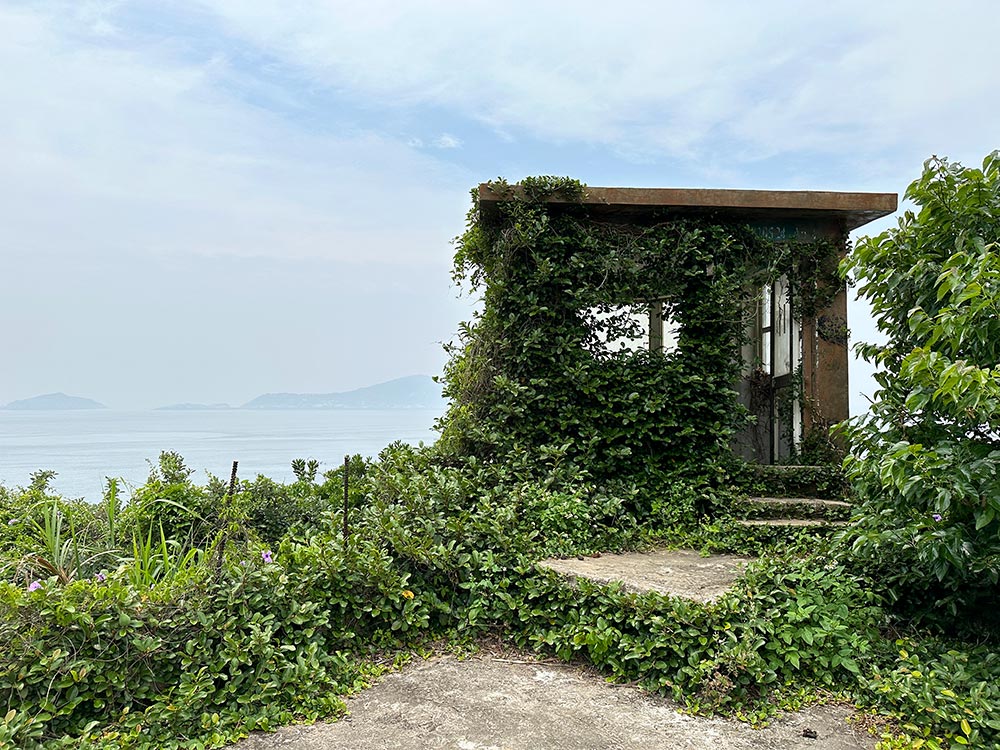

There is another smaller, steeper stairway that you have to squeeze through some foliage to access, and this one leads you down to the rocks by the sea.


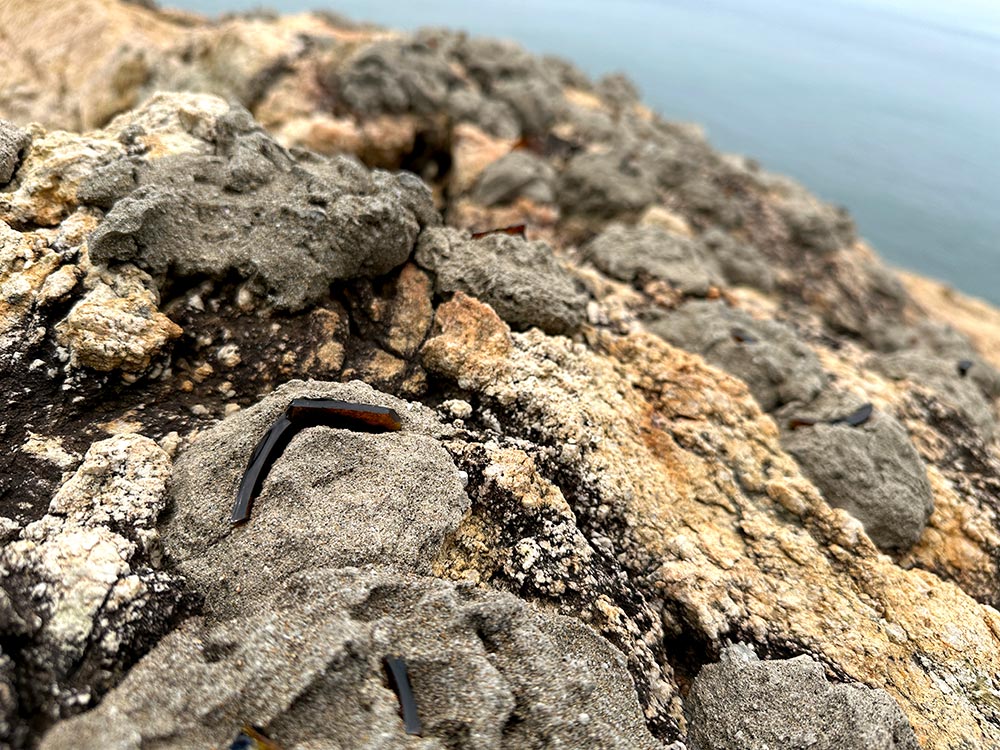
This Totoro Tunnel isn’t officially named or listed on the map nor is there any signage, but there is a road that leads there and a small area to park your car/bike. Here’s a pin to it on Google Maps. It’s located in the far southern tip of Beigan island (Take the right fork, the left was blocked when I visited).
Qinbi Village 芹壁聚落
Qinbi Village is where I stayed and also one of the prettiest villages in Beigan. Similar to Jinsha Village in Nangan, there are lots of original Matsu-style stone houses here in Qinbi that make it very popular for photographers, especially during sunset.
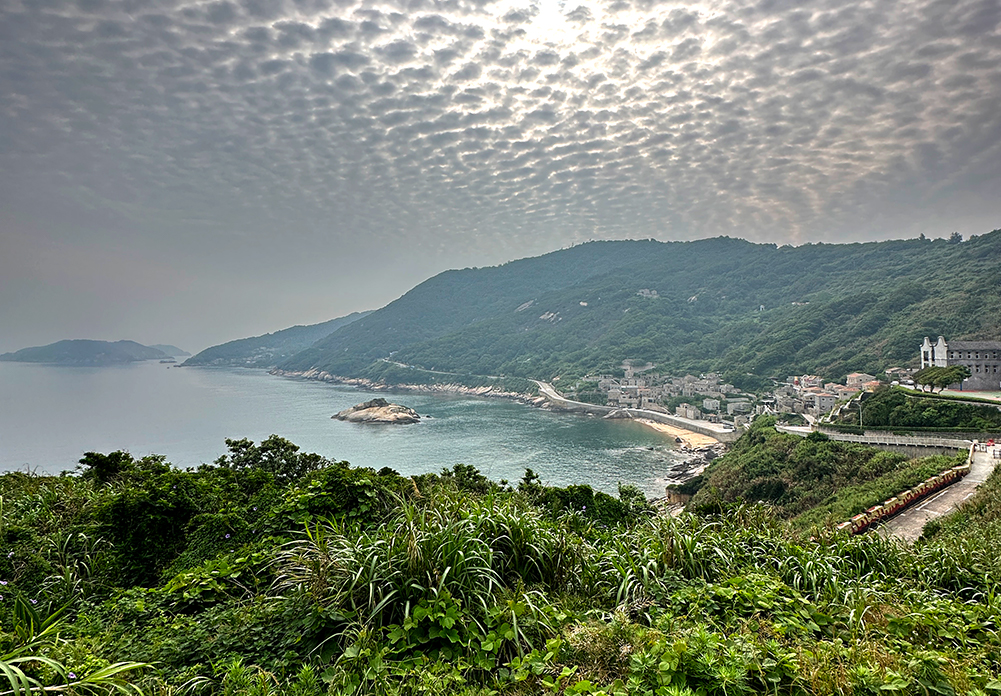
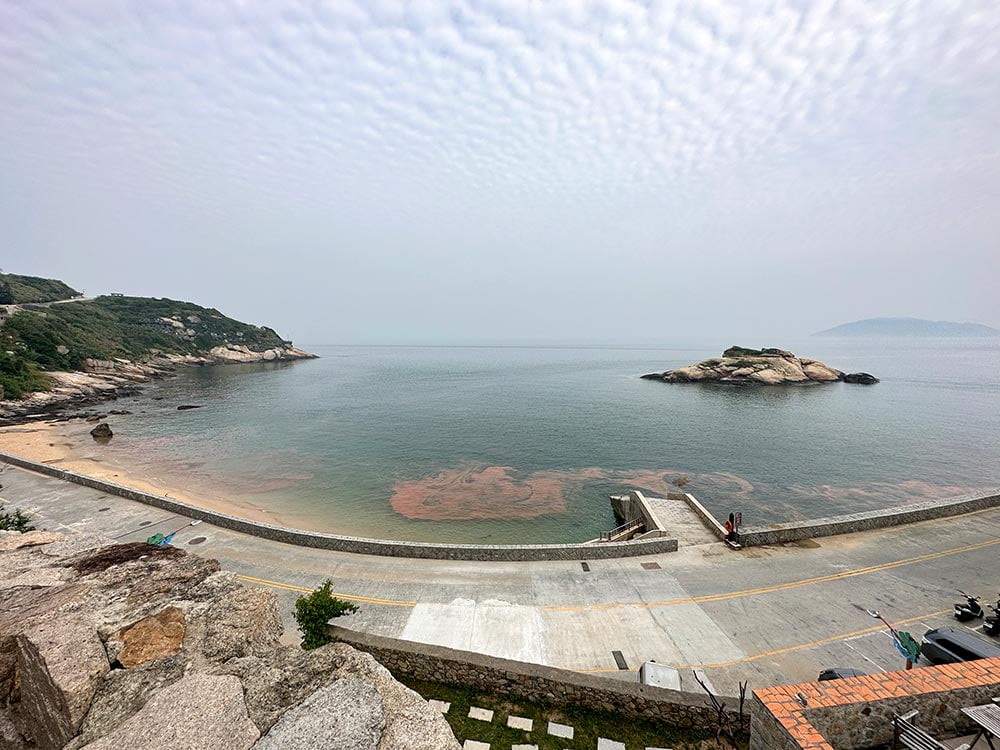
Qinbi Village is built along the hillside so expect to climb lots of stone steps as you explore the narrow alleyways. If you are really intrepid, two staircases lead you to the top end of the village via the Anning Trail 安寧步道 and Qinbi Trail 芹壁步道.
I stayed at Qinbi Qingnian Homestay 芹壁青年民宿 [booking.com affiliate link] which is a traditional guesthouse – read more in my Matsu Islands planning post.
Qinwo Bakery 芹沃咖啡烘焙館
There are a number of eateries in Qinbi worth checking out. Qinwo Bakery 芹沃咖啡烘焙館 is a really cool hipster eatery located with an amazing view of the bay and Turtle Island. Not cheap by Taiwan standards – it’s like Singapore cafe prices, but I really enjoyed my time here and ate here twice.
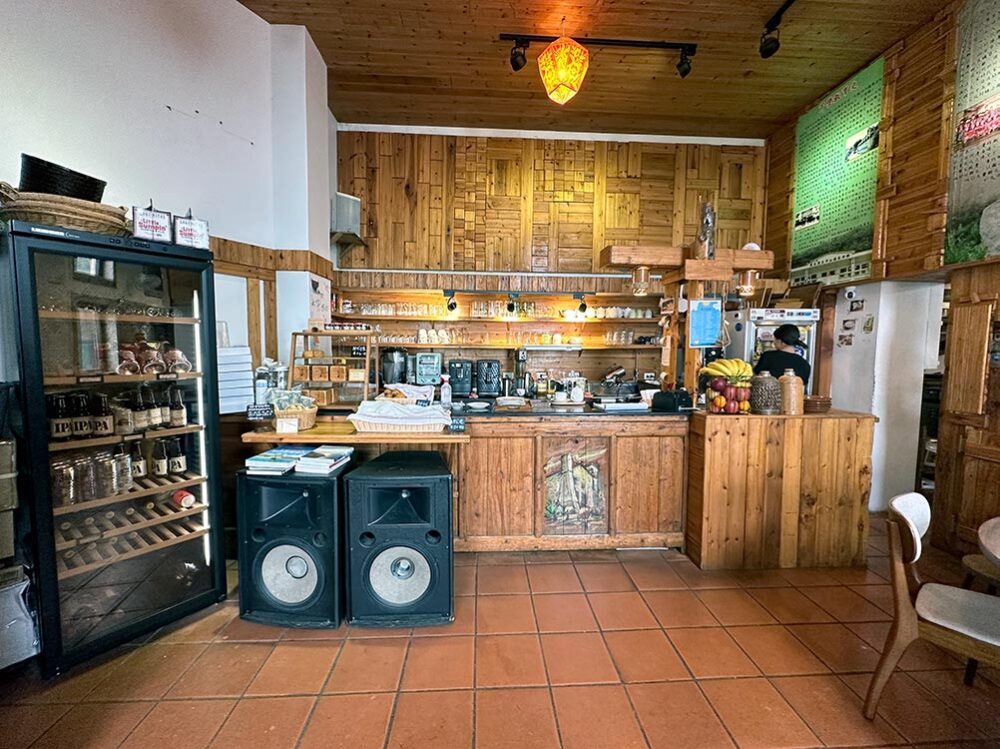


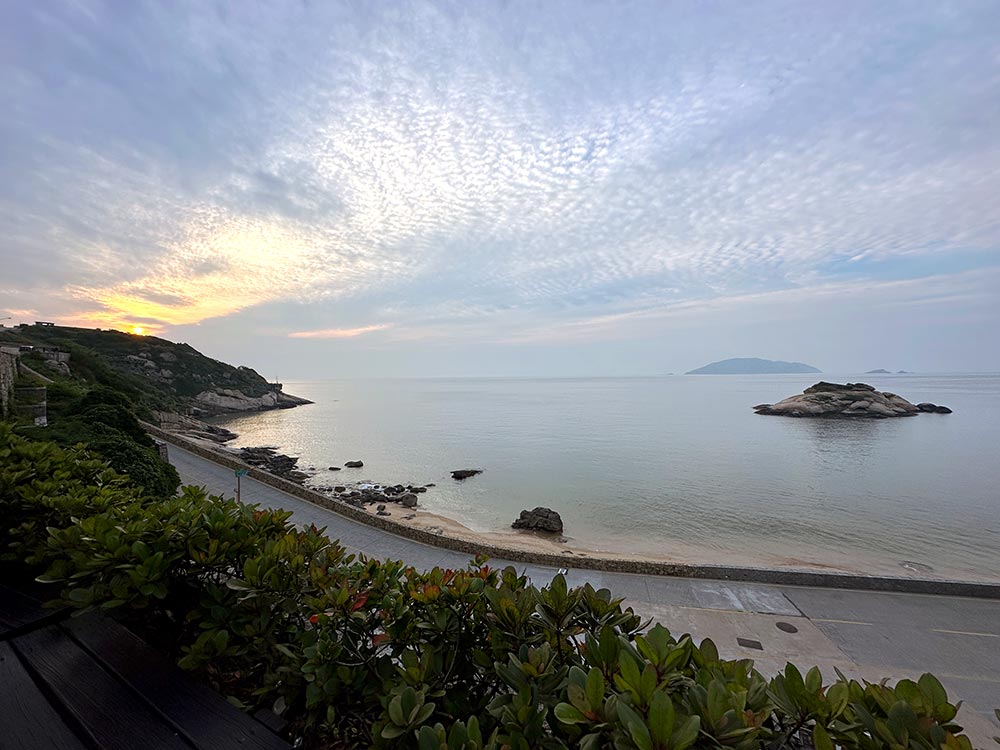
Open 10am – 130pm, 3pm – 630pm. Closed on Wednesdays. Qinwo Bakery’s Facebook Page. Location on Google Maps.
Yunji Ice Shop 雲記冰店
If you want something a little lighter, Yunji Ice Shop 雲記冰店 sells a Matsu Island classic called Golden Dumpling which is really a fried sweet potato dumpling 地瓜餃 and while I’m not usually a fan, this was pretty yummy. It was a hot day so I got a nice shaved ice dessert with more sweet potato, green bean and red bean to cool down.
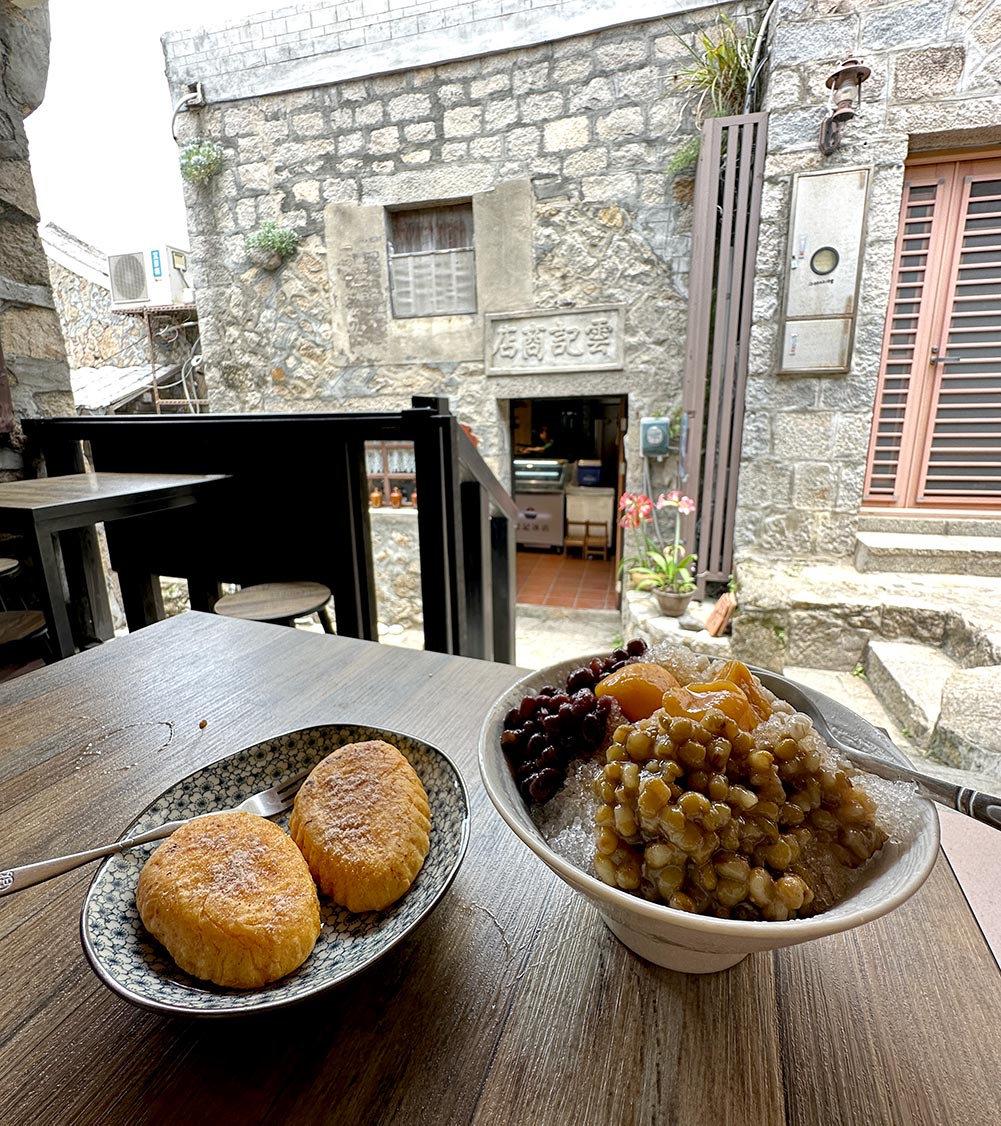
Open 10am – 6pm. Location on Google maps
Qinbi Wanghailou 芹壁望海樓
I also had the famous Laojiu Noodles at the Qinbi Wanghailou 芹壁望海樓 which has lovely views of the bay. It’s a guesthouse but also a restaurant and eatery too. Laojiu is the local liquor that’s put into lots of food for flavour, but most popularly seen in the vermicelli soup.
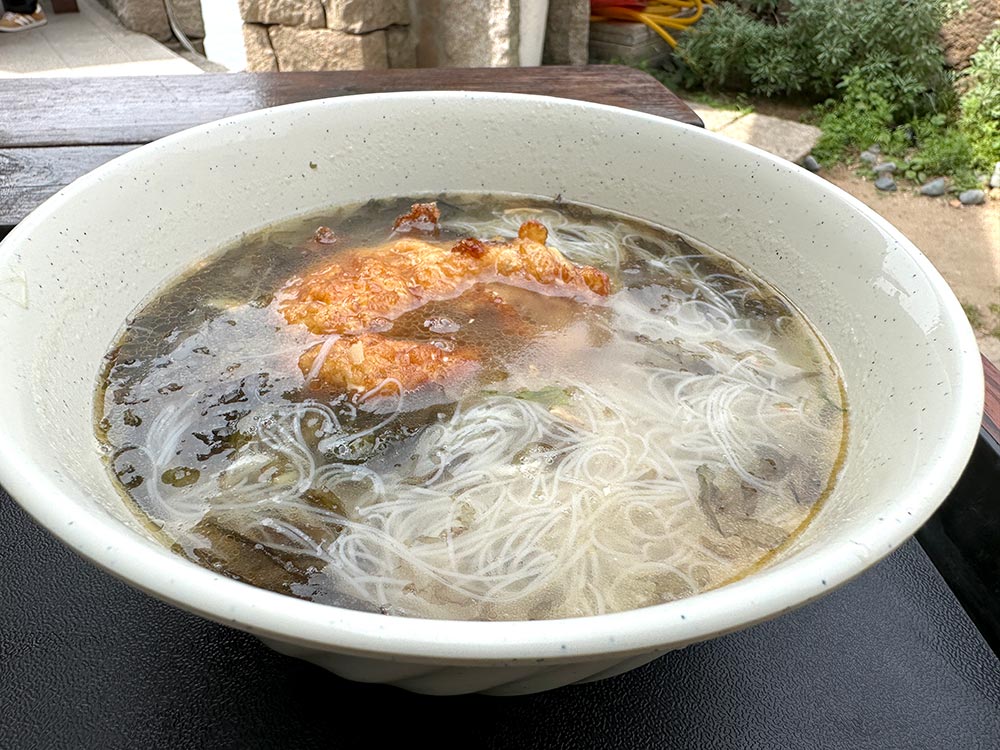
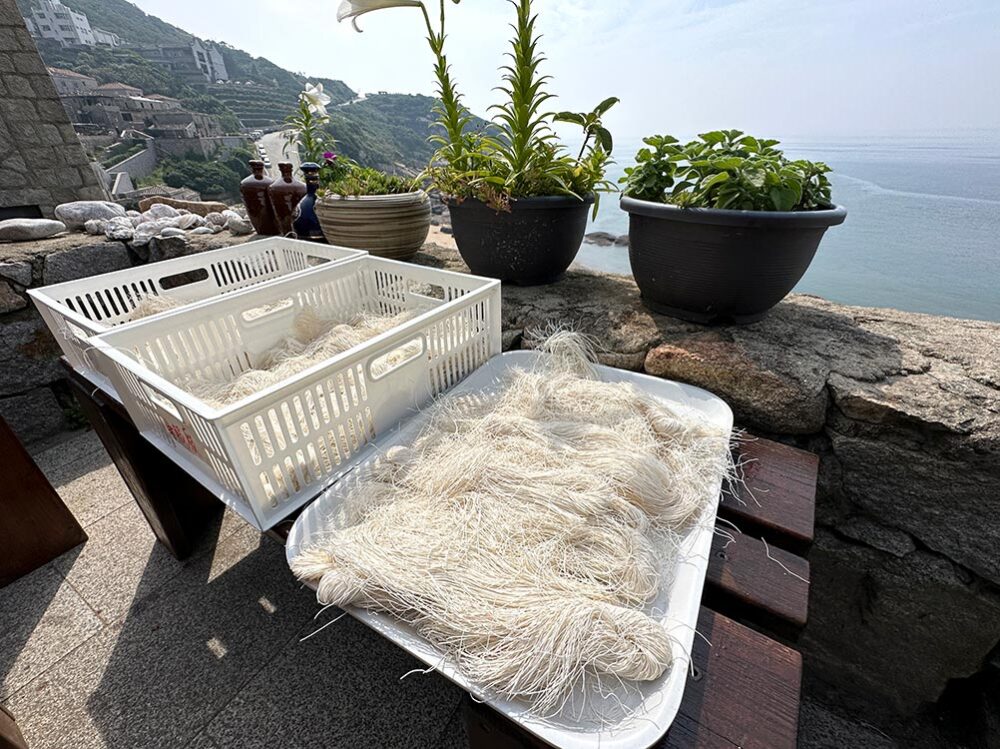
Matsu Broadcast Station 馬祖播音站
If you’ve been to Kinmen Island which is another of Taiwan’s offshore islands that’s closer to China than Taiwan’s mainland, you might be familiar with the use of the broadcast station during war time, where the countries fought psychological warfare with each other by broadcasting propaganda messages and music at each other via loudspeakers.
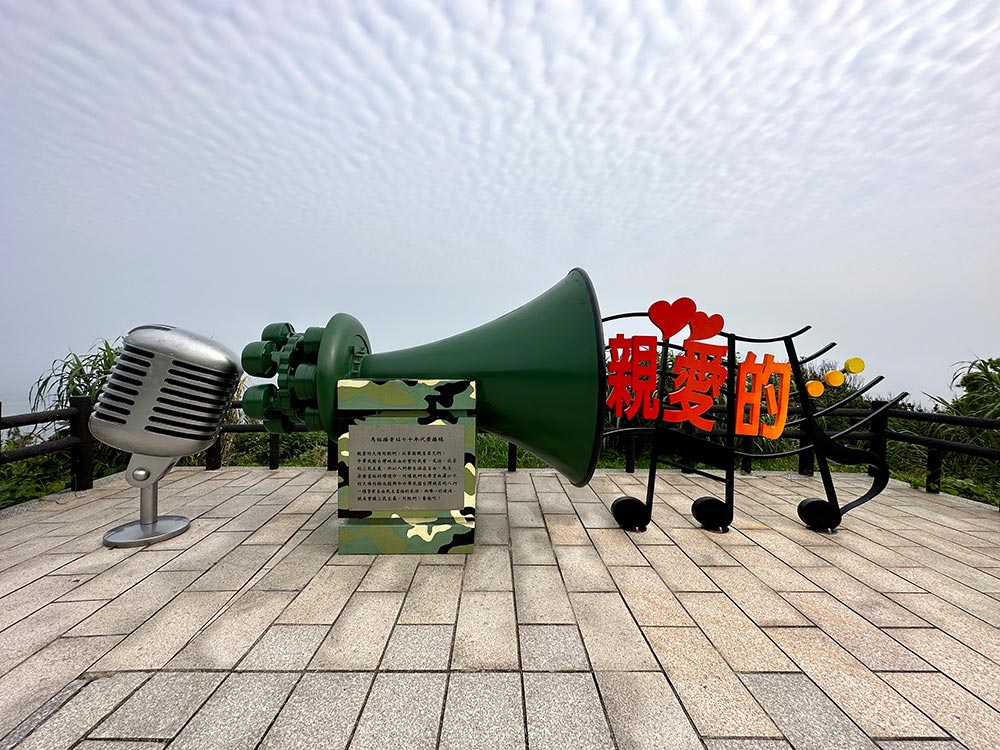


Beigan’s broadcast station was built in 1979 and used in a similar way, and while you can’t climb the structure, you can see it from below and inside and it’s also a great place to get a nice aerial photo of the nearby Qinbi Village.


Bishan 壁山
The best viewpoint on Beigan is of course at its highest point Bi Shan. 298m tall, Bi shan is not just Beigan’s highest peak but also the tallest in all of the Matsu Islands.
The view here isn’t quite 360 but it is the perfect lookout point eastwards with a great view of the airport, Tangqi Village as well as the Luoshan Nature Trail. Like I mentioned earlier, this is a great spot for plane spotters because the airport is right below.
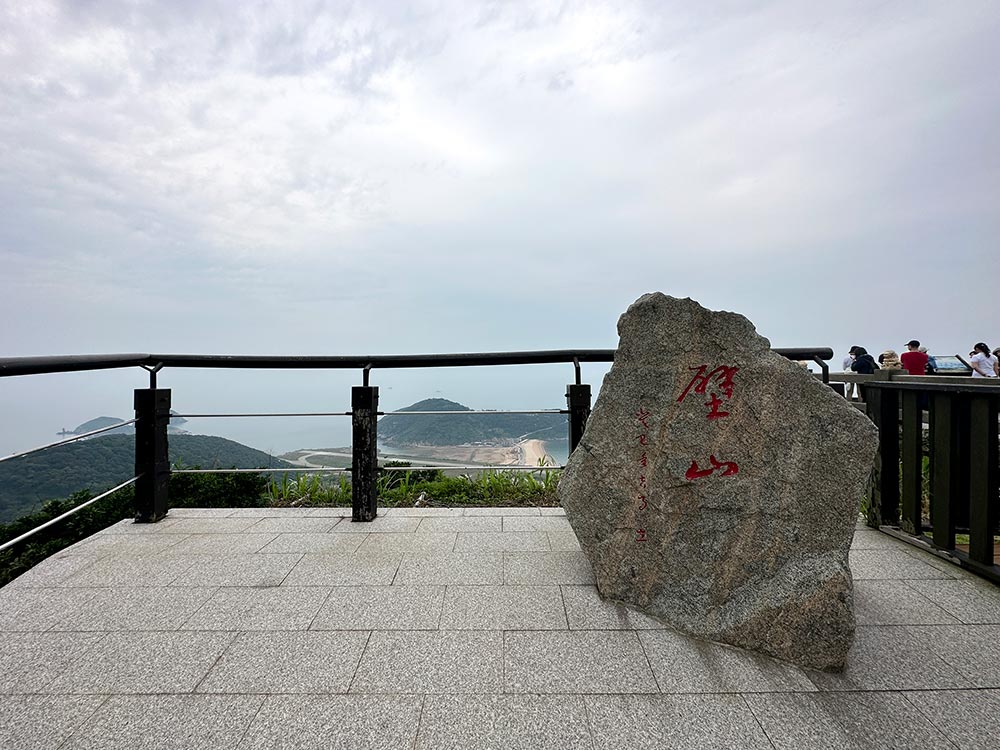

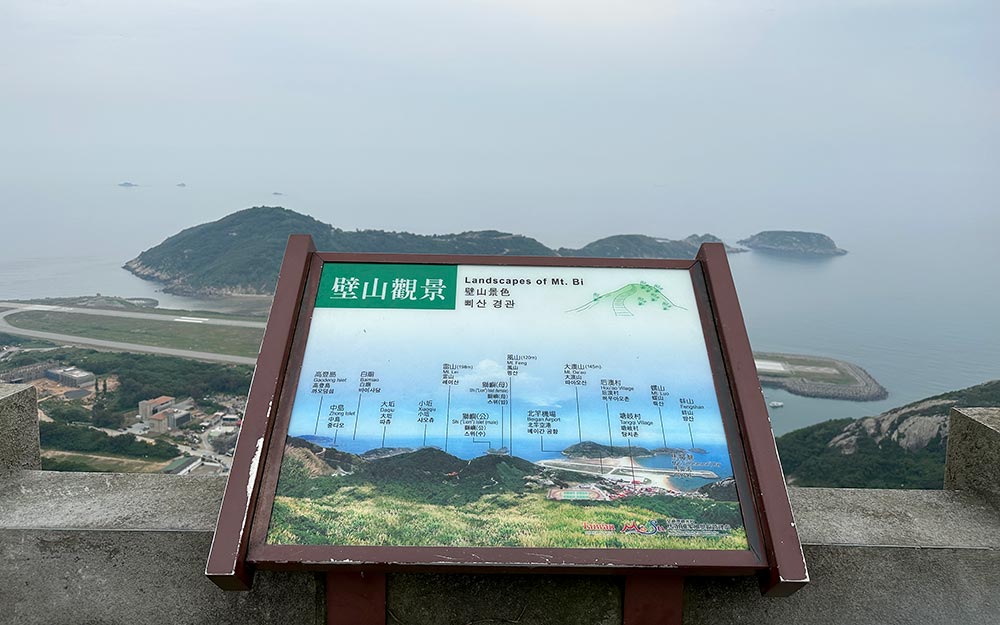
Qiaozi Village 橋仔聚落
Qiaozi Village (or Qiaozai – that particular character 仔 can be either zai or zi) is Beigan’s northernmost village. There are some temples here that you can check out, but it’s mostly a small quiet village.

This particular village was once the biggest village in Beigan from its commercial fishing activity with nearby China and got its name from the many bridges crisscrossing it. Today it’s much quieter but known for having quite a lot of temples (8!) despite its small size.

My biggest memory of Qiaozi was having an absolutely incredible night looking at the Blue Tears along the beach here, and taking the boat ride out to see more of the Blue Tears. The SO LOHAS B&B [booking.com affiliate link] that my friends stayed at sold tickets for the Blue Tears Boat Ride, but you can read more about this in my Matsu Islands Blue Tears post – I think I’d like to stay here if I ever come back to Beigan!
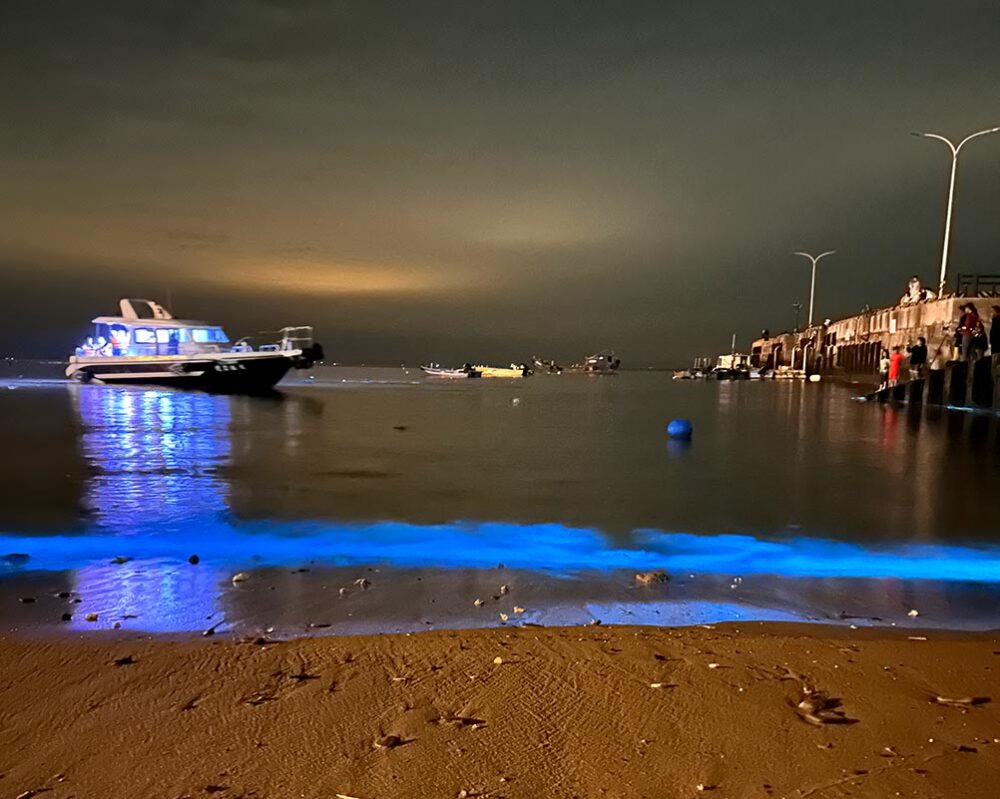
Tangqi Village 塘岐聚落
Tangqi Village could be considered Beigan’s main village because it’s right next to the airport, the island’s sole post office (and ATM which doesn’t accept foreign cards) is located here along with not one but two whole 7-11 shops.

A Po Fish Noodles 阿婆魚麵店
Another famous Matsu food to try is the fish noodle, and this noodle soup dish doesn’t just have fish in it, but the noodles itself are made out of fish. Fish of course is plentiful in the Matsu Islands, so during the winter season when they needed a way to preserve the fish, makig fish noodles was one of the ways to do so.
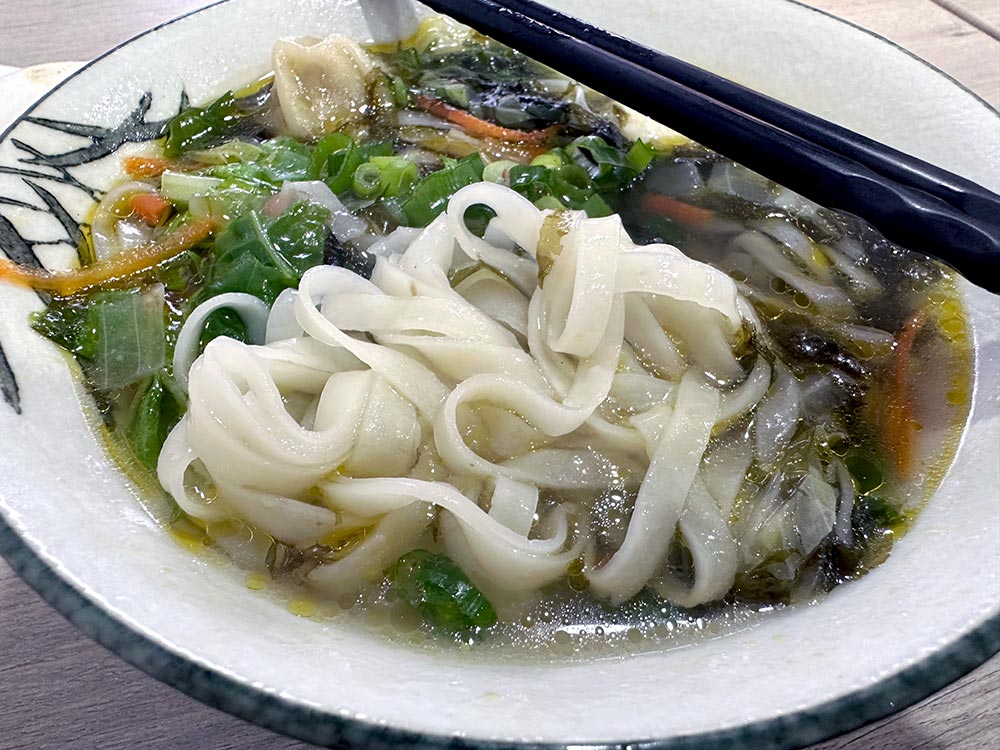
A Po Fish Noodle is quite famous because their noodles are all handmade, so I popped in at a slightly odd time to grab a meal. Very hearty bowl of noodle soup – the fish noodle is thicker and more springy than normal rice noodles but it wasn’t overly fishy, overall a satisfying meal.

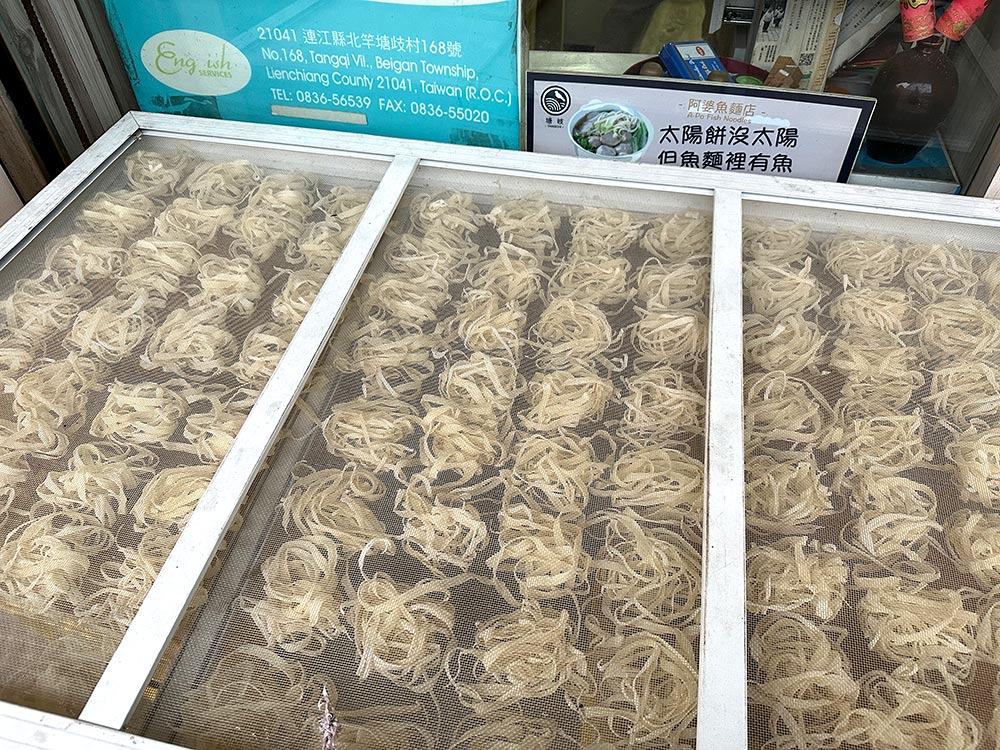
Open 11am – 130pm everyday and 5pm – 7pm on Fri, Sat and Sun. A Po Fish Noodles website. Google maps location.
Fresh Jianbing Shop 鮮美廉餅店
Jianbing which is basically bread with sesame seeds is a very basic bread but here in Matsu they call them Jiguang Biscuits or 繼光餅 named for the general who used these as army rations back in the day. I bought these on the day I was very low in cash because they were super cheap – just 15 NTD (60 cents) for 1. I bought two just in case as snack backups.

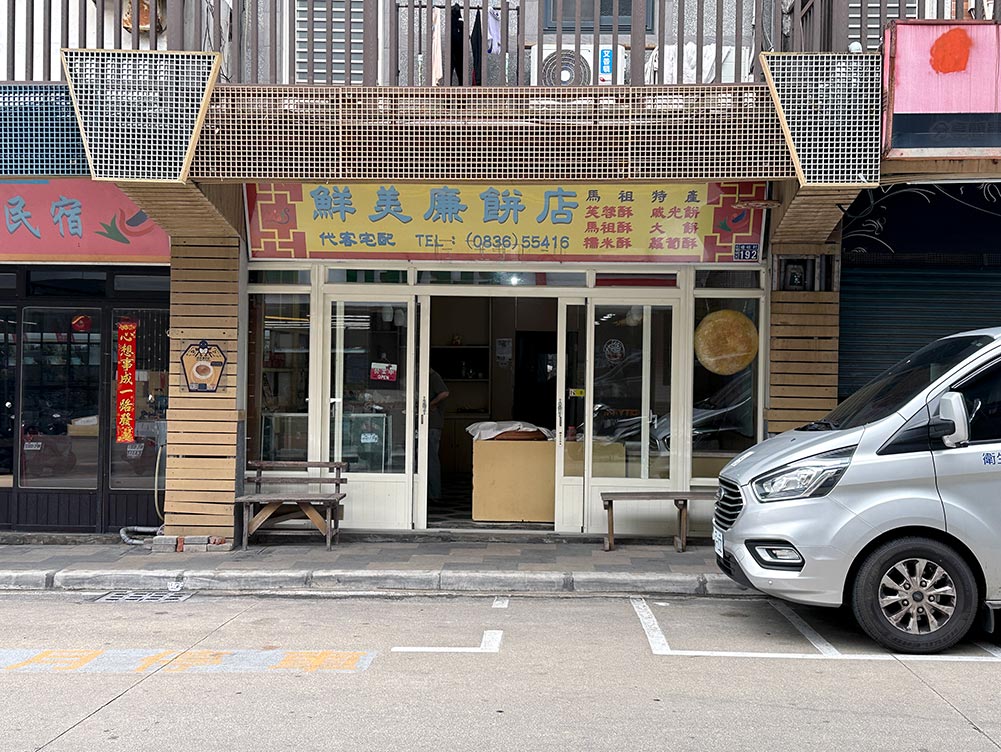
Since Tangqi’s Main Street is a short walk away from the airport, I popped out for a quick breakfast and last minute souvenir shopping here before checking in at the airport.
Duanpo 短坡
As with most of the spots in Matsu Island, this stronghold on Mount Duanpo was also a military base that was converted into a scenic viewing area.
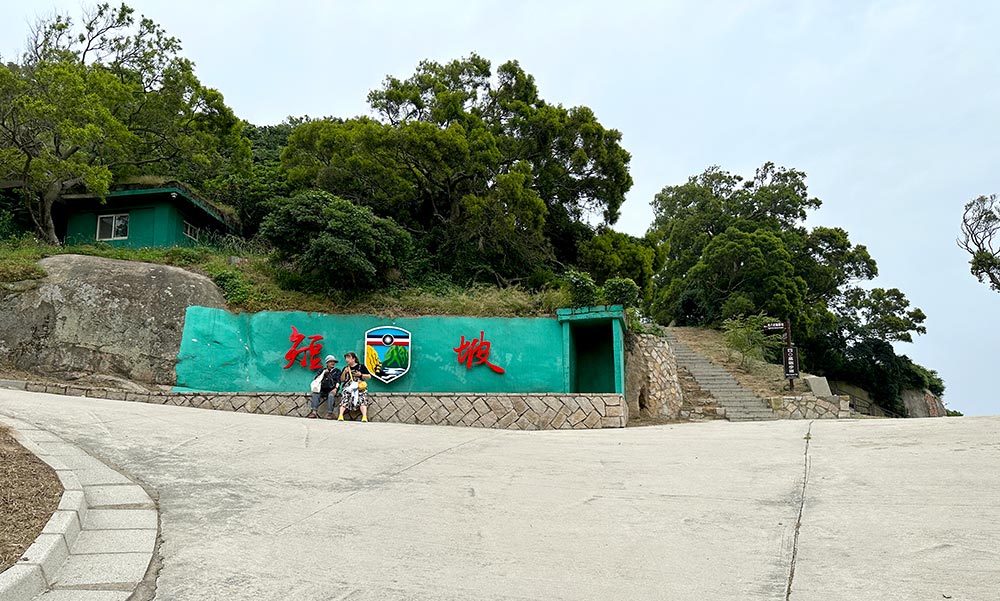
This spot gives you even closer views of Beigan Airport as it is lower than Bishan, and they’ve also kept some of the artillery guns used in the past intact here so you can see for yourself what the gunners life might have been like back in the day.
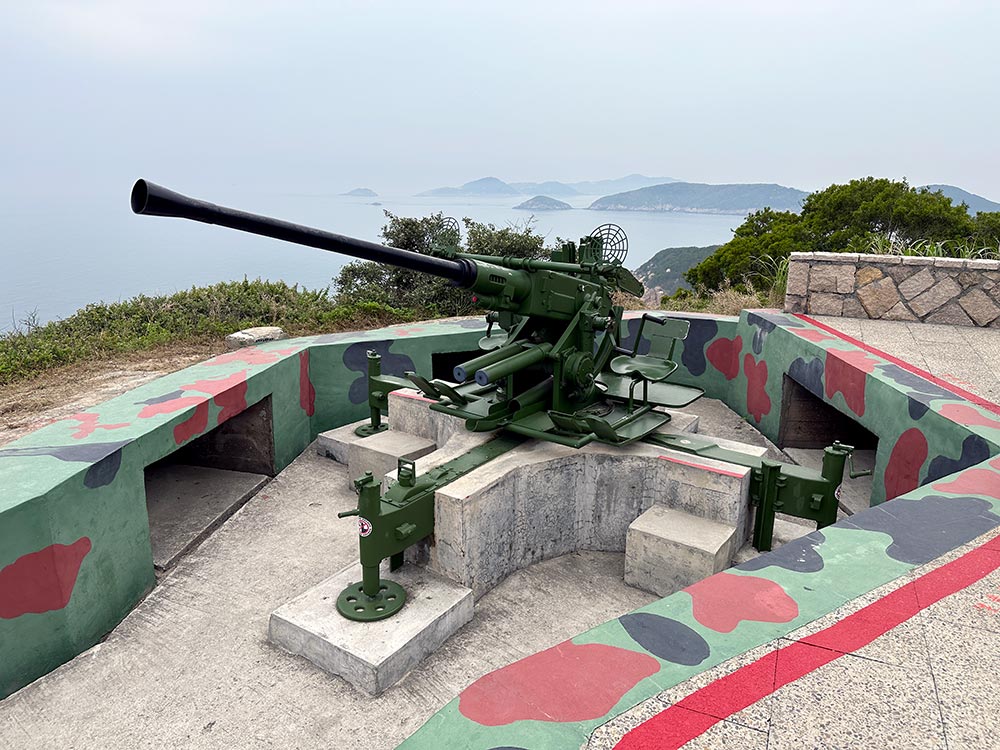

The opening hours are a bit erratic as it’s still in use by the military. Open 8am – 11am (830am in winter), 2pm – 5pm (430pm in winter). Closed last week of every month and during major training sessions. Google Maps Location
Mabiwan 馬鼻灣
This area connects the Beigan island to Houao is made of reclaimed land. It’s suposed to be a good spot for Blue Tears depending on the current, but we didn’t see any while we eere there. It’s name translates into ‘Horse Nose’ because of its shape!


Houao 后沃
Houao actually used to be a separate island until they built the new Beigan airport in between the islands and connected them. The village here is very tiny and most people pop by because of the War and Peace Memorial and Luoshan Nature Trail.
War and Peace Memorial Memorial Centre 戰爭和平紀念公園主題館
This little museum is a great place to learn about the Matsu Island’s history and why it had such a strong military presence for over 4 decades, along with the many events that shaped its past. The museum is not very large but the space is well curated and there are panels in both English and Chinese so you can learn more about Matsu’s history.

If you’re starting off your Matsu Island tour with Beigan, visiting this museum first might give you more context to the things that you see around the islands. Also make sure to head up to the roof where there is a nice viewing platform for some scenery.
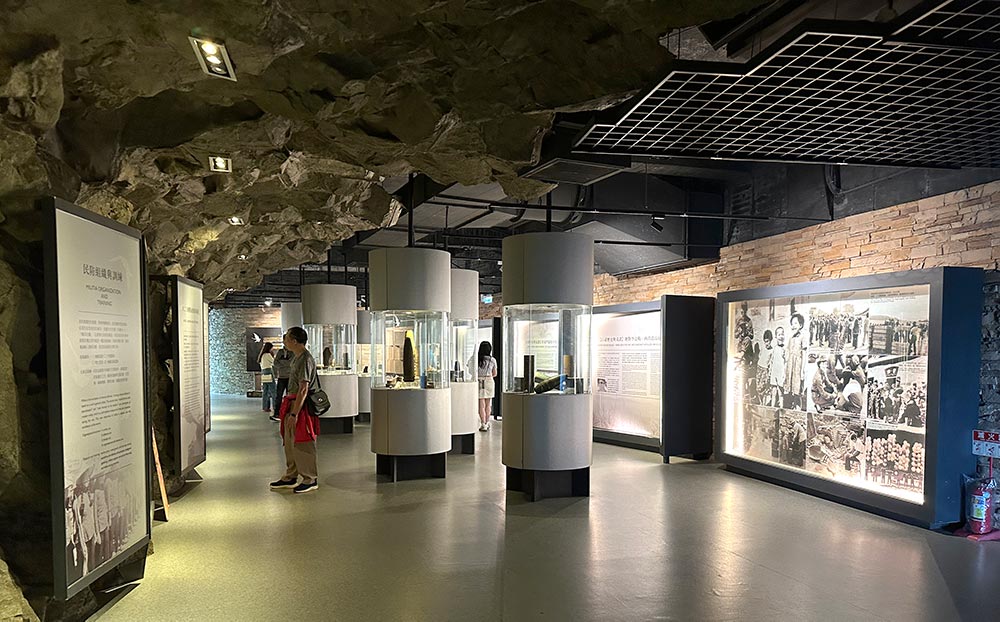
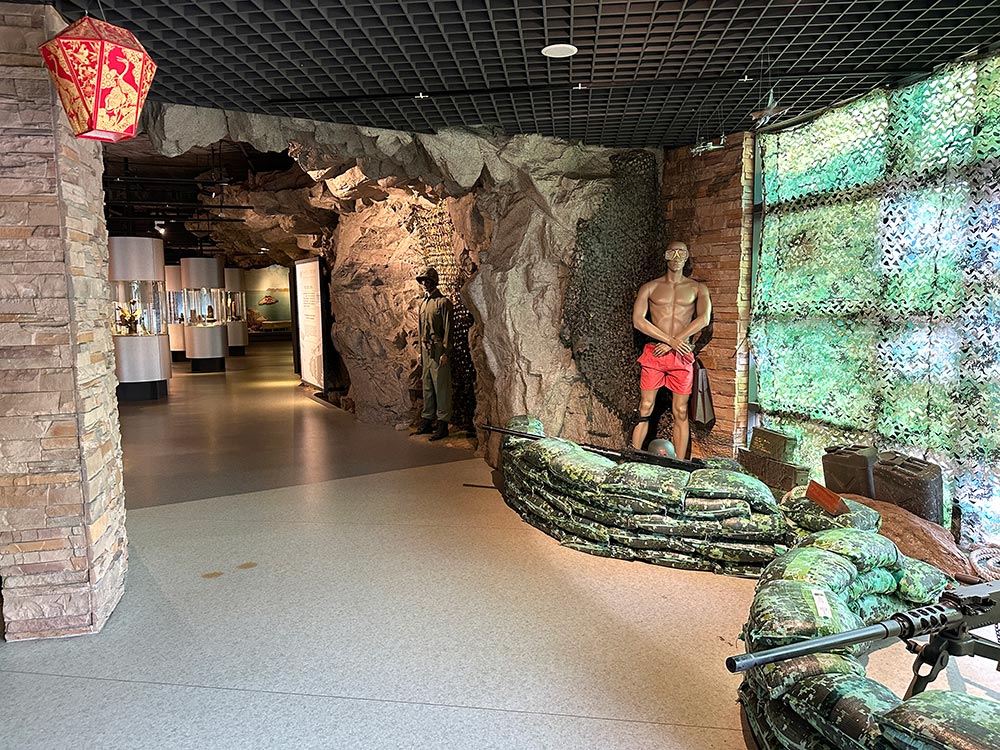
Open 830am – 1230pm, 130pm – 530pm. Closed on Wednesdays. Google Maps Location
Luoshan Nature Trail 螺山自然步道
Right next to the Museum is a path that leads to the Luoshan Nature Trail. Just 700m long, the narrow trail was the path locals used to take to go fishing or picking oysters, but for visitors it’s a fairly short hike and a nice way to see Beigan’s scenic beauty.
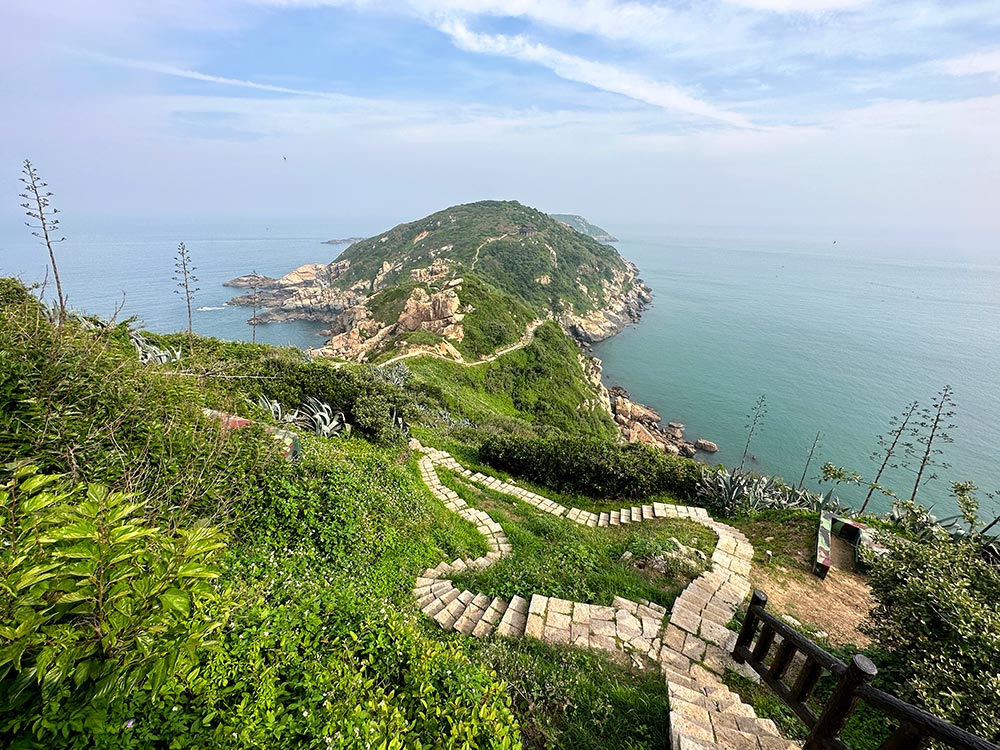
You don’t have to be an expert hiker for this, but be prepared for a fair bit of stair climbing and uneven ground. The paths are really narrow and there’s one spot you kinda have to clamber over a small rocky area, but overall I’d say it’s quite doable. Here’s a better look at the trail in this video clip on my IG.

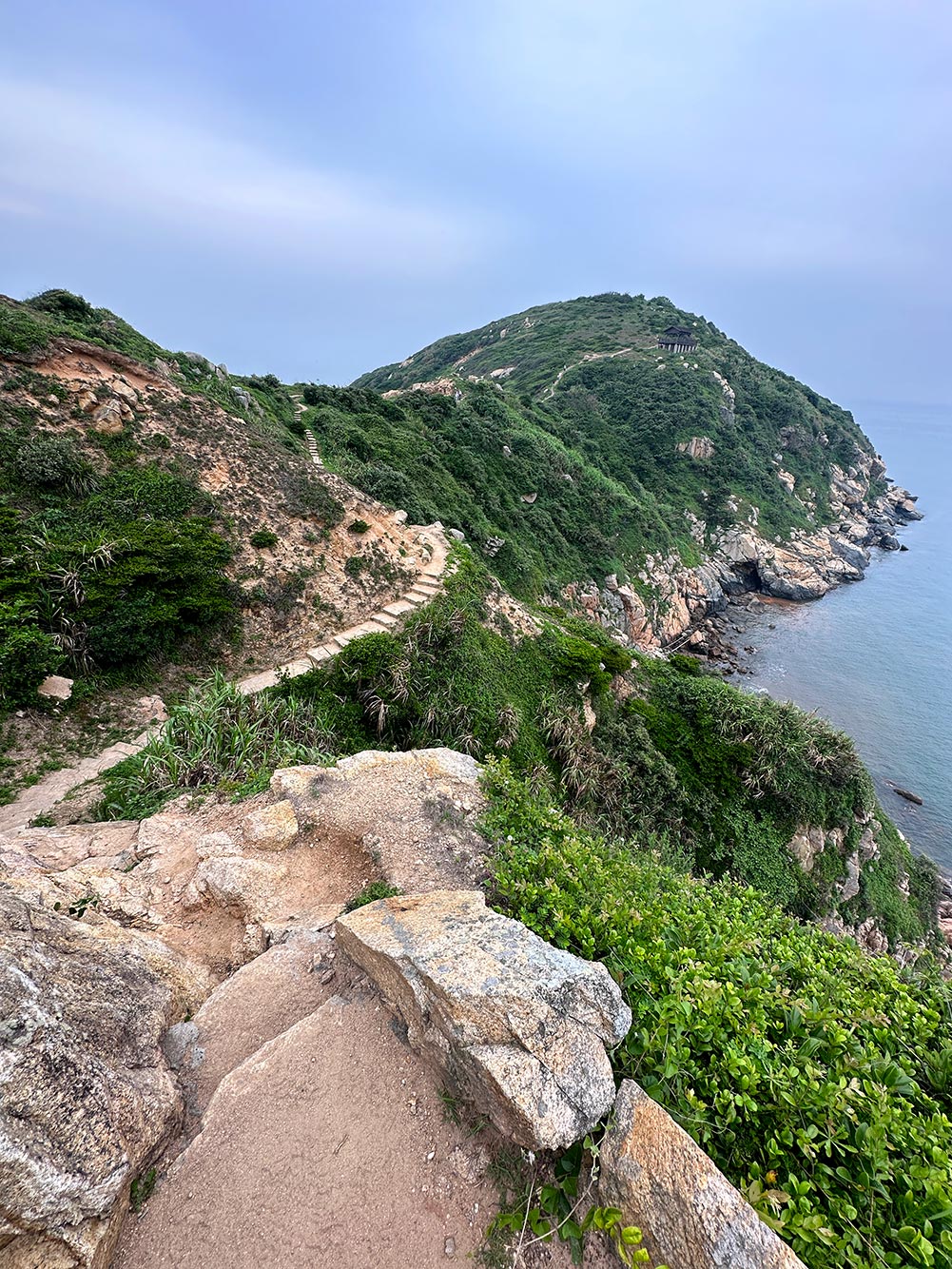
There is a viewing pavilion here you can catch the planes flying in and out of Beigan Airport, and I also spotted lots of red tide on the day that I visited. Not many trees as this place gets really windswept – you should avoid it when its gusting because there’s no room for error with those narrow paths!
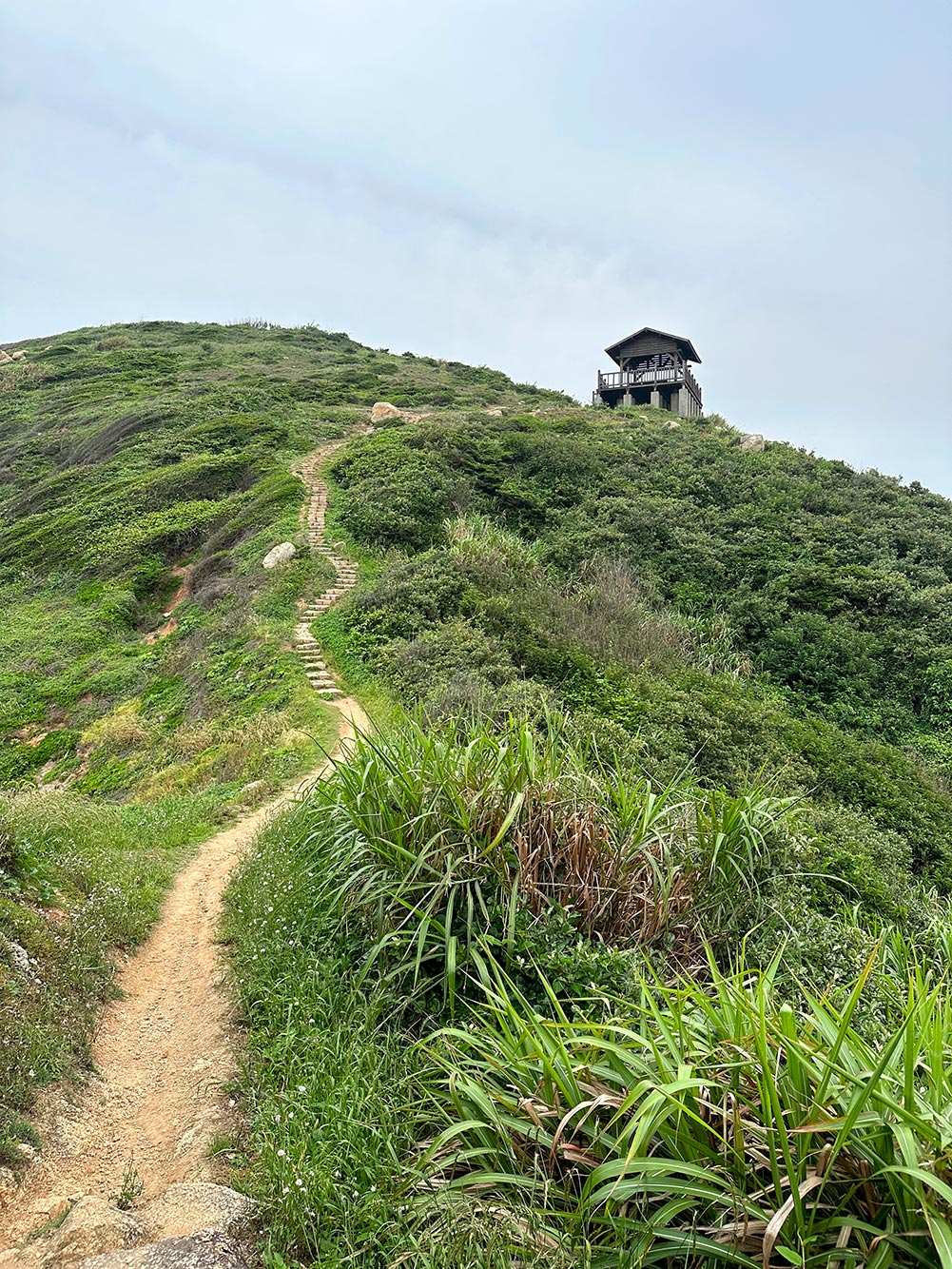
Confucius on the Sea 海上孔子像
The Luoshan Nature Trail ends with a view of 2 islands – Luoshan and Bangshan. It looked like you might be able to walk over to Luoshan if the tide is low, but I wouldn’t risk it! Here you can see a rather unusual rock known as the Confucius Rock.
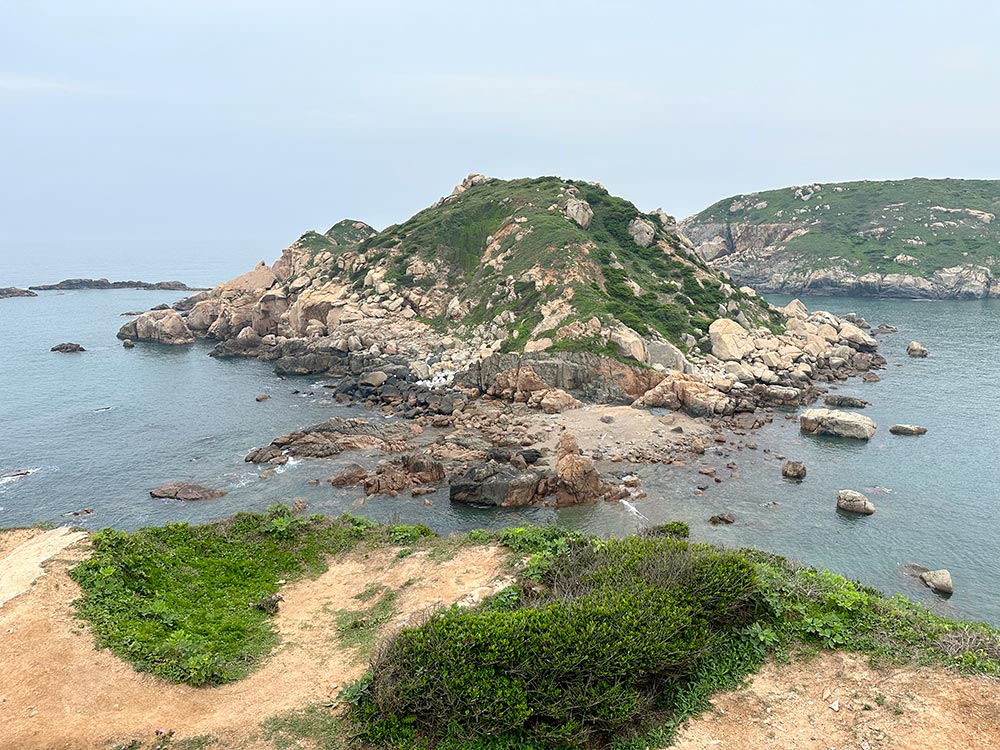
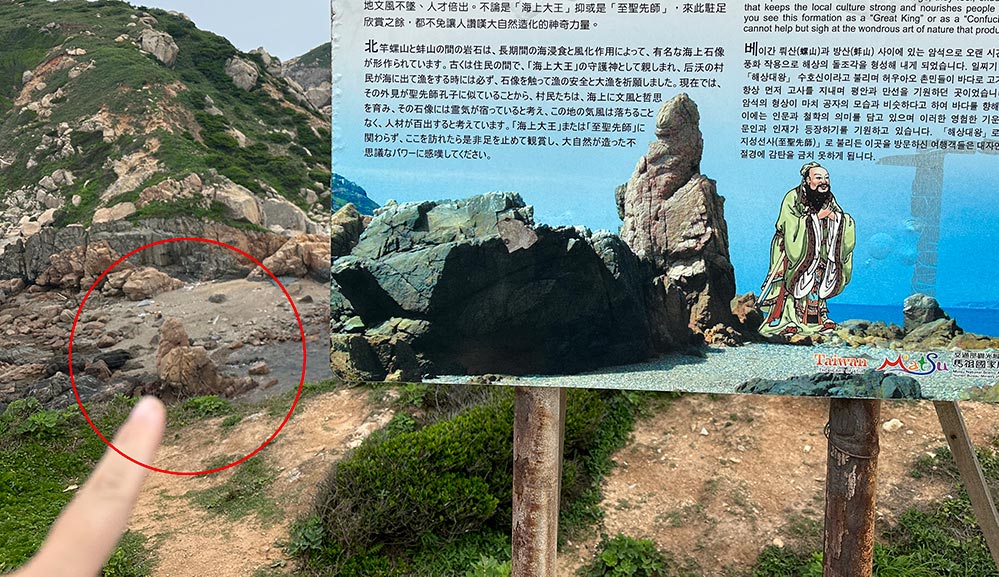
The entrance to the Luoshan nature trail is just next to the cafe at the War and Peace Memorial Centre. Google map location
No. 6 Stronghold 06聚點
Looking at the map of Beigan, Google didn’t have much info for the road that went northwards but on the Beigan Tourism Map it showed No. 6 and No. 8 strongholds listed, so off to see more abandoned military structures!
The road to No. 8 was closed, so I headed all the way to the northern tip of Houao Island to see No.6 Stronghold. This particular stronghold faces northwards to other uninhabited islands like the Lion Islets (Shiyu), Daqiu Island and Gaodeng Island.

It involves a bit of a stair climb down the slope but has lovely coastal and island views. You can pop into a tunnel or two, as well as climb a little bit closer to the rocky coast by the water.
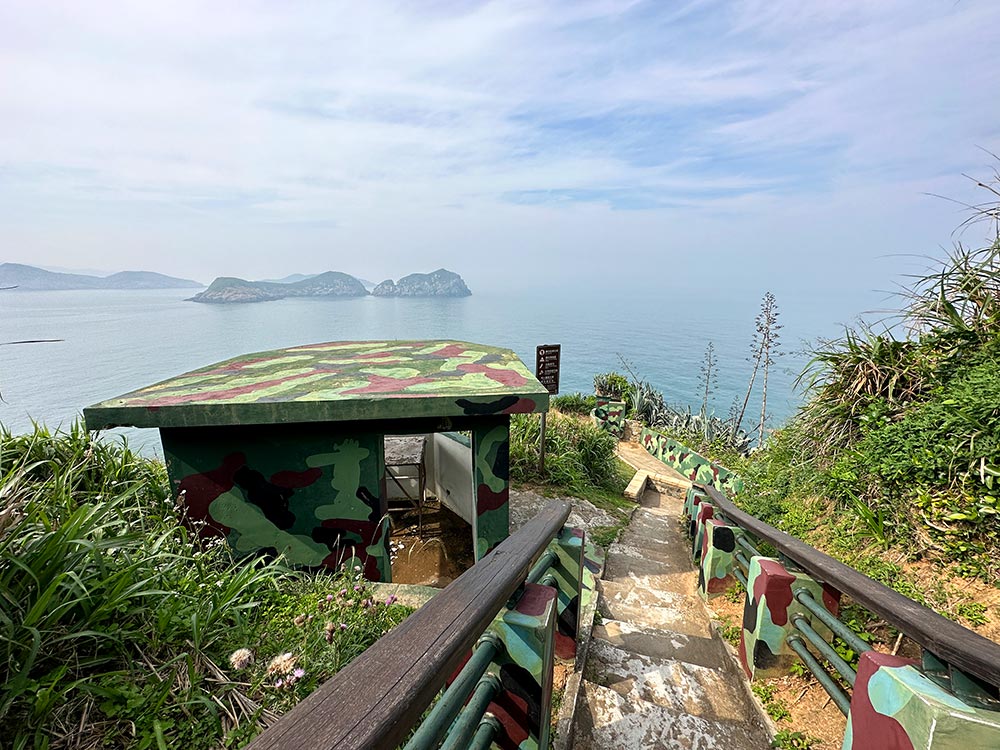
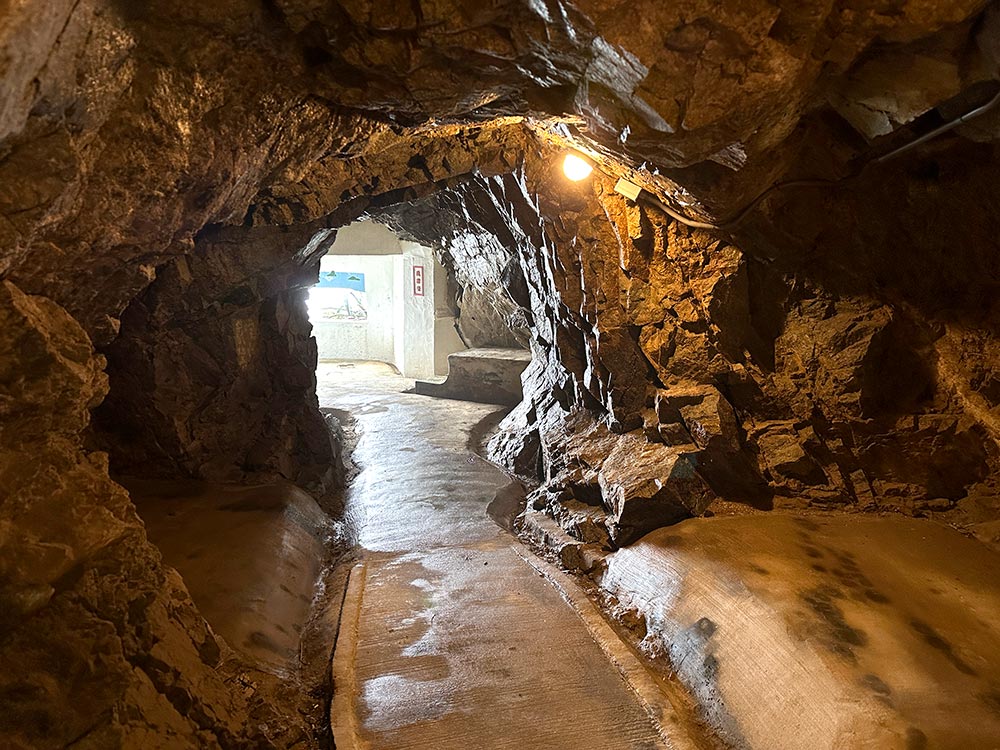
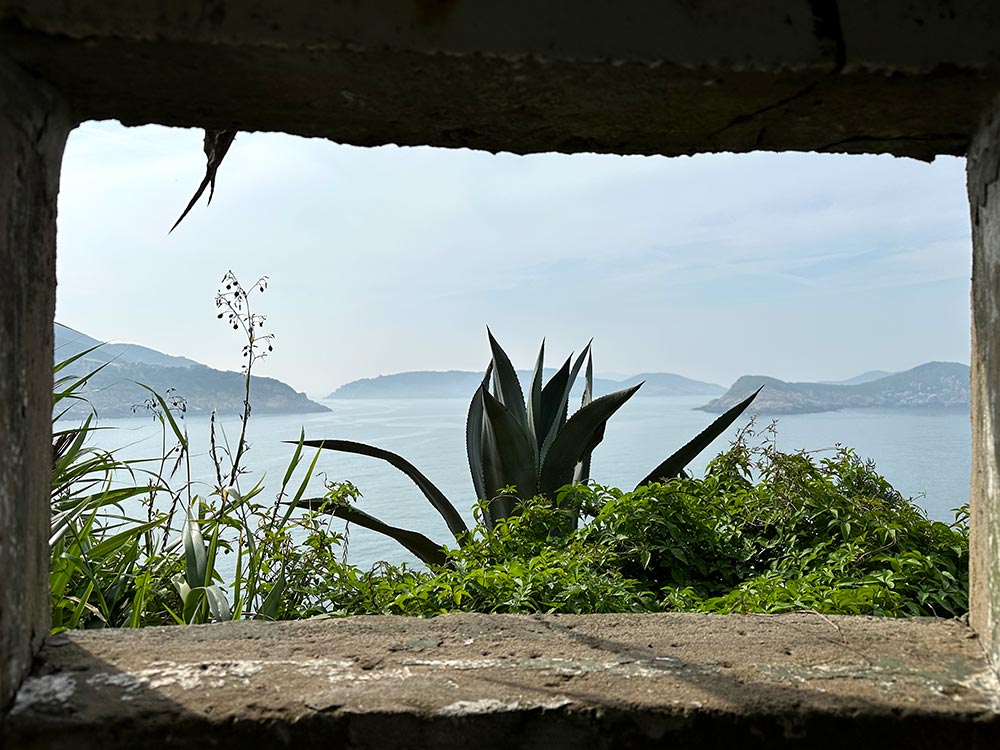

Head north up the road from the War and Peace Memorial Centre. It’s located past the 06 Gather Point Guesthouse [booking.com affiliate link]. Google Maps location
Looking for more about the Matsu Islands? Visit neighbouring Nangan or check out my Matsu Island Guide to plan your trip or how to see the Blue Tears in the Matsu Islands.
Or check out more about Taiwan’s offshore islands below:



